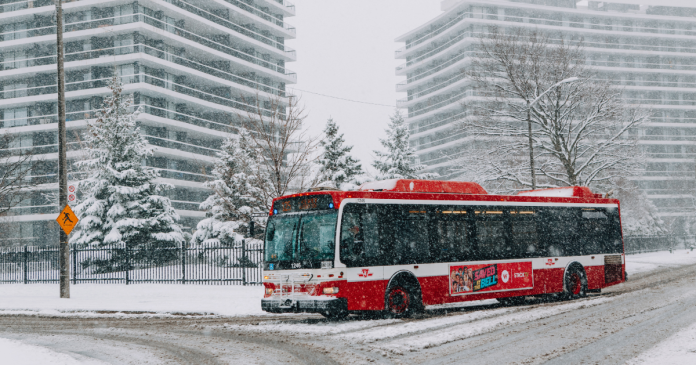Preparing rental properties for the Ontario winter is crucial for landlords to ensure the safety and comfort of their tenants. By performing essential maintenance checks, landlords can prevent potential issues caused by cold temperatures, snow, and freezing conditions. Here are the top seven maintenance checks for winter-proofing rental properties in Ontario.
1. Inspect Heating Systems
- Furnace Inspection: Verify the furnace’s functionality by scheduling a professional inspection and cleaning, ensuring it operates efficiently during the colder months.
- Thermostat Calibration: Check and calibrate thermostats to guarantee they accurately regulate temperatures, preventing both energy wastage and discomfort for tenants.
Ensuring the functionality of heating systems is vital to comply with Ontario’s legal responsibilities as a landlord. The Residential Tenancies Act (RTA) requires landlords to provide and maintain heating systems that adequately heat residential units. Scheduling a professional inspection ensures compliance and minimizes the risk of heating-related issues during the cold months. Any repairs or maintenance identified during these inspections should be promptly addressed to guarantee the heating system’s efficiency and compliance with legal standards.
2. Seal Drafts and Inspect Insulation
- Window and Door Sealing: Seal gaps around windows and doors to prevent drafts, reducing heat loss and lowering energy bills for tenants.
- Attic and Wall Insulation Inspection: Inspect insulation in the attic and walls to ensure adequate warmth retention within the property, reducing heating costs and improving comfort.
Addressing drafts by sealing gaps around doors and windows is essential for maintaining a habitable living space, as outlined in the RTA’s requirement for landlords to provide and maintain a property fit for human habitation. Proper insulation also falls under this obligation. It’s crucial to inspect and maintain insulation in attics and walls to provide adequate warmth for tenants. By ensuring proper insulation and sealing drafts, landlords fulfill their legal duty to offer a habitable residence, which is a core requirement under the RTA.
3. Roof and Gutter Maintenance
- Roof Inspection: Assess the roof for damage, missing shingles, or leaks, addressing any issues to prevent water damage during snow and ice thaws.
- Gutter Clearance: Clear gutters of debris to prevent ice dams and ensure proper water drainage away from the property, reducing the risk of roof leaks or damage.
The maintenance and inspection of roofs and gutters play a pivotal role in preventing water damage, which directly affects the habitability of the property. The landlord’s duty to maintain the rental property includes the obligation to prevent water ingress or leaks that could compromise the tenant’s living conditions. Timely roof inspections and gutter maintenance help prevent structural damage, protecting the property from leaks caused by snow or ice accumulation, ultimately fulfilling the landlord’s legal obligation to provide a safe and habitable environment.
4. Plumbing Checks
- Pipe Insulation: Wrap exposed pipes with insulation to prevent freezing and potential bursting, safeguarding against costly water damage.
- Faucet Dripping: Advise tenants to let faucets drip during freezing temperatures to prevent pipe freezing and bursting.
Insulating exposed pipes is crucial to prevent freezing and potential bursting, which could result in significant property damage and impact the habitability of the unit. Ensuring tenants are aware of this preventive measure is part of the landlord’s duty to inform tenants about maintaining the property in good condition. Advising tenants to let faucets drip during freezing temperatures is a proactive step that helps prevent pipe freezing and bursting, aligning with the landlord’s responsibility to maintain the property’s habitability.
5. Exterior Property Maintenance
- Sidewalks and Driveways: Repair cracks and ensure proper de-icing to prevent slips and falls, maintaining safe walkways for tenants.
- Exterior Wall Inspection: Inspect exterior walls for cracks and damage, repairing and sealing to prevent cold air infiltration and potential structural issues.
The responsibility to maintain the property extends to ensuring safe exterior conditions for tenants. Repairing cracks in sidewalks and driveways reduces liability risks for potential slips and falls, aligning with the landlord’s duty to ensure the property is safe for occupancy. Additionally, inspecting exterior walls for damage and sealing any cracks maintains a habitable and secure living space, fulfilling the landlord’s obligation under the RTA to provide and maintain a safe and secure residence.
6. Winter Landscaping
- Tree Trimming: Trim trees near the property to prevent heavy snow or ice accumulation that could damage the roof or property.
- Snow Removal Plan: Establish a snow removal plan or service to keep driveways, sidewalks, and common areas clear and safe for tenants.
Trimming trees near the property serves both preventive and safety purposes. It prevents potential damage to the property caused by heavy snow or ice accumulation while also reducing risks to tenants, aligning with the landlord’s duty to ensure a safe living environment. Establishing a snow removal plan or service for common areas and pathways maintains safe conditions for tenants, fulfilling the obligation to provide a safe environment for occupancy as per the RTA.
7. Emergency Preparedness
- Emergency Kits: Encourage tenants to prepare emergency kits with essentials in case of power outages or severe weather conditions.
- Tenant Communication: Inform tenants about emergency procedures and contact information in case of weather-related emergencies.
Encouraging tenants to prepare emergency kits aligns with the landlord’s duty to inform tenants about emergency procedures and ensures that tenants are equipped to handle potential power outages or severe weather. Sharing emergency procedures and contact information contributes to providing a safe and secure environment, aligning with the landlord’s obligation to ensure the property’s habitability and the tenants’ safety under the RTA.
Proactive winter-proofing measures can significantly minimize potential issues and ensure the safety and comfort of tenants during the harsh Ontario winter. By conducting these seven essential maintenance checks, landlords can protect their properties and provide a secure and warm environment for their tenants throughout the colder months.



